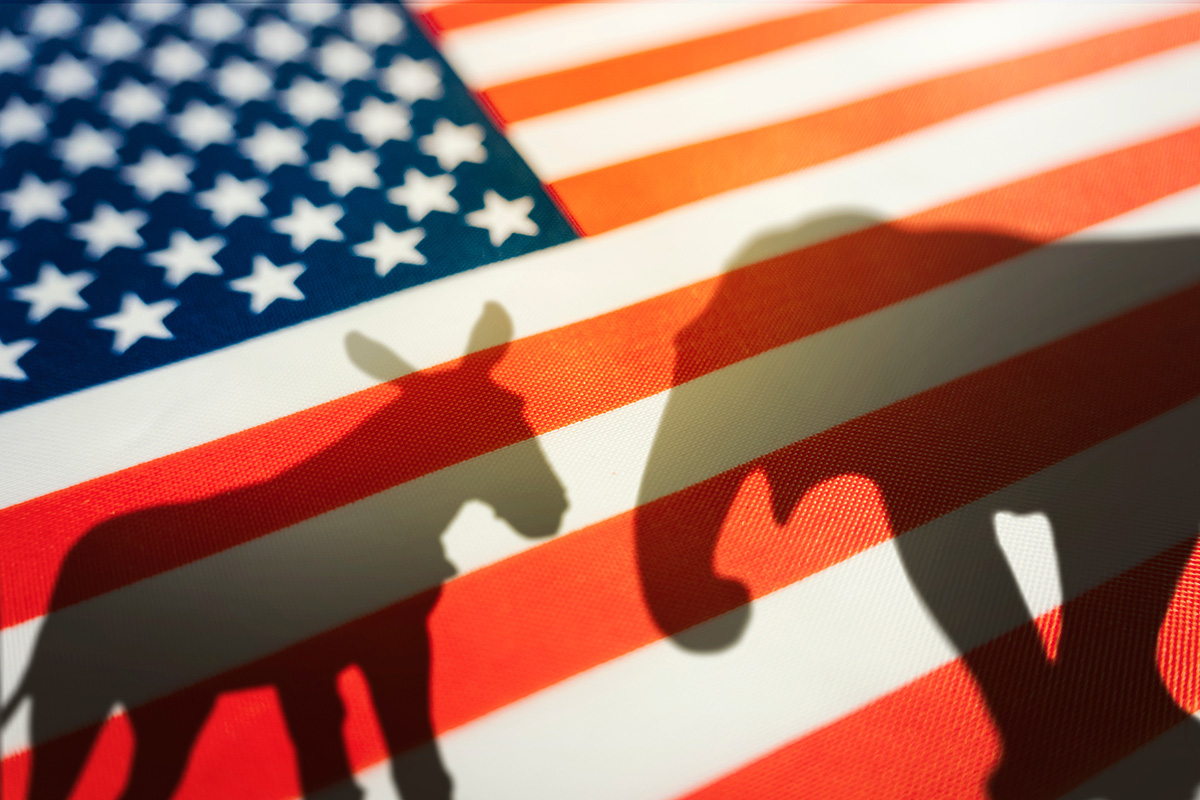We All Can Just Get Along
In a Q&A, Professor of Political Science Matthew Levendusky explains the results of a megastudy he worked on with dozens of collaborators: In a nutshell, they found there are many ways to significantly reduce partisan animosity.
At the time of this writing, the United States is just a few weeks from electing its next president (when you read this, the results may already be known). Regardless of who wins, history will show a topsy-turvy election cycle in a country whose far left and far right seem to be moving further into their proverbial corners.
The partisan divide is something Professor of Political Science Matthew Levendusky has studied for a long time. Recently, he and colleagues from Penn’s Wharton School, Stanford, Cornell, MIT, and elsewhere wanted to understand whether anything could bridge the gap or change attitudes and behaviors.

To do this work, they proposed an open call for treatment options from academics and practitioners, eventually receiving 252 submissions from more than 400 people on four continents. From those, the team selected 25 promising options to study, which included, for example, watching videos in which people bond despite having just had a political disagreement, or reading news stories highlighting that people on both of the political aisle are tired of polarization.
In findings the researchers published in the journal Science, they showed that most of the treatments they tested—23 out of 25—significantly reduced partisan animosity. Some did significantly decrease support for undemocratic practices and partisan violence, though the numbers were far fewer. Omnia spoke with Levendusky about the study and its implications.
What would you say is the main finding of this research?
In recent years, scholars have become very worried about the consequences of partisan animosity—the idea that Democrats and Republicans can’t get along, dislike and distrust one another, and so forth. Some scholars have argued this animosity contributes to anti-democratic attitudes like censoring uncongenial media outlets or ignoring court rulings that you don’t like, or even contributes to support for partisan violence, harming those on the other side of the political aisle.
In this paper, a huge collaboration of scholars led by a team at Stanford asked if we could reduce these outcomes. In a nutshell, the answer is yes, at least for partisan animosity.
Did the findings surprise you?
I’m not surprised that there are multiple ways of reducing partisan animosity. The book I published last year, Our Common Bonds, is about that very subject. The advantage of doing a study like this is that you can pool across so many different treatments from many different researchers. One person alone couldn’t develop all of these treatments, but working together, researchers can do much more—it highlights the value of collaboration for social science.
It’s more surprising to me that undemocratic practices and partisan violence were harder to shift. This suggests that these outcomes are quite distinct from animus. Animus still matters because we know it harms democratic functioning: support for compromise, how people evaluate leaders, their policy attitudes and so forth—I showed this in the book, Partisan Hostility and American Democracy, which came out this spring. But we also care a great deal about anti-democratic attitudes and violence. Those are extremely important and worrying outcomes. We need other strategies to tackle those.
Previous research of yours has found that the partisan chasm isn’t as wide as is often portrayed. How do these latest findings fit with that prior work?
This all demonstrates that there are real and important differences between Democrats and Republicans, but it is more possible to bridge them than people think. When I ran the discussion experiments used in my earlier study, many people came up at the end to tell me how surprised they were that they could talk to folks who disagreed with them and do so civilly. What many studies show isn’t so much that people think they agree on a lot of things after discussion; it’s more that they respect the other side, think they’re more reasonable, etc. The goal is never complete agreement, but rather learning how to navigate differences on difficult topics.
What do we do with this information now that we have it?
One key thing is to work on strategies to mitigate animosity; there are many groups working toward that end, like Braver Angels and the Civic Health Project. But even more importantly, there need to be efforts from political leaders to renounce anti-democratic attitudes and political violence. It needs to be clear that violence is unacceptable, and that we use political means to solve our differences. We know that trusted political leaders can sway their supporters’ opinions, not because people are gullible, but because people see those leaders as important sources of information. Forcefully rejecting ways of undermining the system, and of rejecting violence, are important signals to the public.


